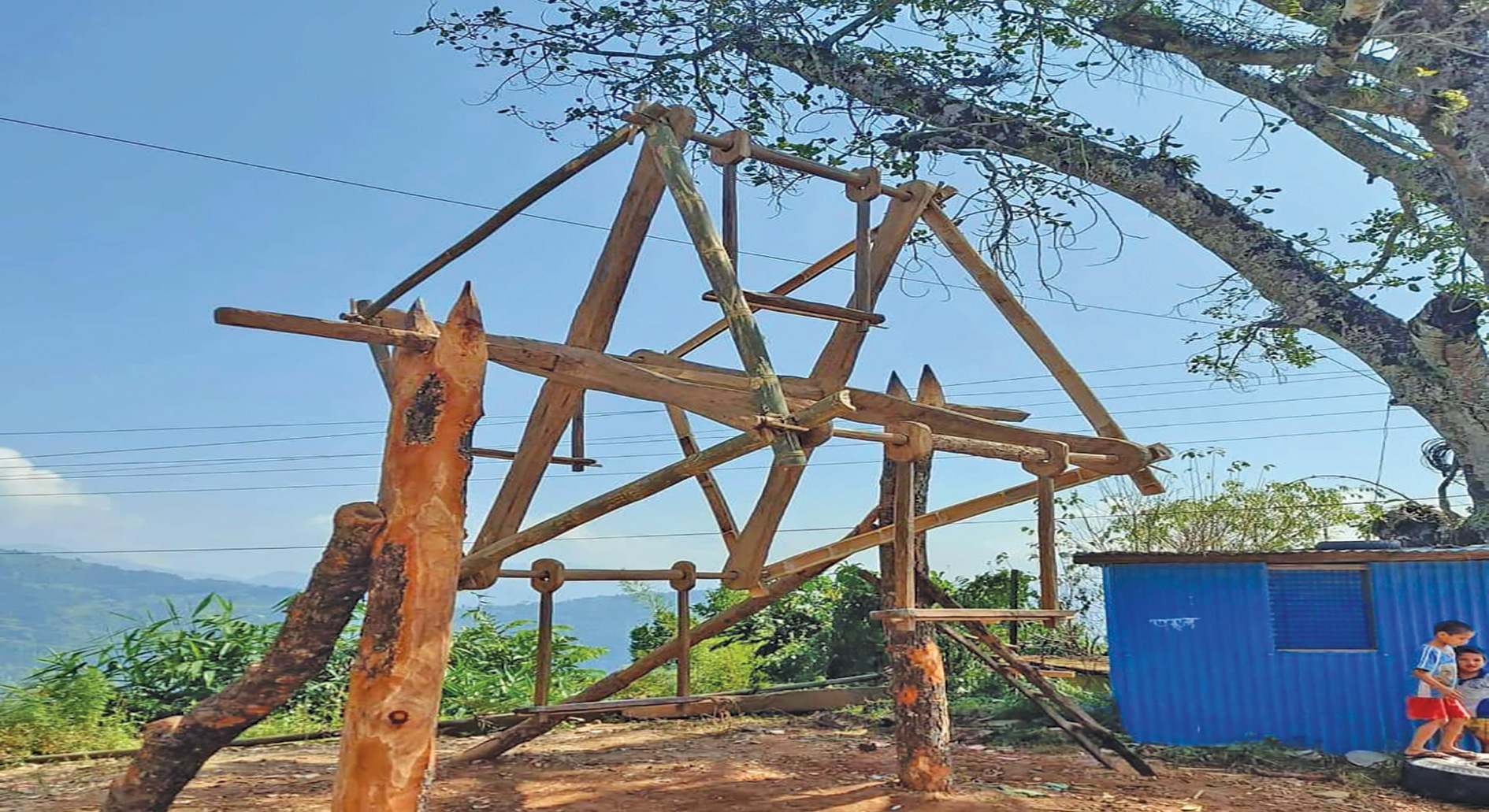No kites, no swings. Where is the Dashain of yore?

By Aashish Mishra
Kathmandu, Oct 12 : “Is it even Dashain?” 73-year-old Sanobhai Ojha questioned as he looked at the sky on the day of Ghatasthapana.
“Wide open sky as far as the eye can see. Where are the kites?” asked the Bhailagaal, a Bhaktapur resident.
Where are the kites, indeed?
Up until a decade ago, Kathmandu’s skies used to be filled with kites, Hanuman Joshi, a kite seller in Patandhoka, shared. “Children used to begin flying kites from the end of Shrawan. Sadly, that is no longer the case,” he moaned.
Another Dashain tradition that has seemingly disappeared is the swings.
Sashikala Manandhar remembers playing on huge bamboo swings built in the fields near her maternal uncle’s home in Imadol, Lalitpur. “Everyone from the community used to come together and build swings for children to play on. It was the highlight of Dashain,” the 51-year-old reminisced.
Mohan Raj Tamang also shared similar fond memories of Dashain swings from back home in Chautara, Sindhupalchowk. “It used to bring the whole village together. Everyone used to bring Babiyo, long leaves of the Eulaliopsis binata plant used to make rope, wood, bamboo and tools and set up swings for the children.”
Tamang, 58, explained, “The Linge Ping (swing) was the easiest and the simplest to make but those who could afford it used to hire carpenters and labourers to make the more elaborate Rote Ping (with a small Ferris wheel-like structure) or the Pirke Ping (merry-go-round).”
“The kids of today shall never fathom the fun,” he lamented.
Manandhar blames the rise of technology and the pressure of homework on children for the loss of these traditions. “The children today have no time to celebrate Dashain. They are forced to spend the whole day doing Dashain
homework,” she said, adding, “The little free time they do have, they spend on social media and YouTube rather than physical activities.”
In addition to being fun games, kites and swings also hold religious meaning, according to Ojha. “Kites are a means to send message to Indra, king of gods, that the monsoon is over and the earth no longer needs rain. Swings are a medium to ‘get the feet off the ground’ and ascend to the heavens,” he said.
Furthermore, they also taught people important skills and values, he added. “Flying kites is not a fool’s errand. You have to understand wind movements, aerodynamics and devise strategies to deter attacks from fellow kite pilots. These things sharpen one’s instincts.”
“Also, swings are a medium to teach ambition. Telling people that they have to ‘get off the ground’ is a metaphorical way of telling them that they have to achieve something, that they have to have something to show friends and family during Dashain. It was our ancestors’ way of motivating people to be better,” Ojha said. “Losing these customs means losing the essence of Dashain.”
But Joshi is optimistic. He does not feel that all has been lost and thinks that the traditions can be revived if people just get the right push. “Last year, because of the free time people had during the lockdown, kite sales soared to the skies. This shows that people still have the will to revive the culture, they just need the right circumstances.”
Recent News

Do not make expressions casting dout on election: EC
14 Apr, 2022
CM Bhatta says may New Year 2079 BS inspire positive thinking
14 Apr, 2022
Three new cases, 44 recoveries in 24 hours
14 Apr, 2022
689 climbers of 84 teams so far acquire permits for climbing various peaks this spring season
14 Apr, 2022
How the rising cost of living crisis is impacting Nepal
14 Apr, 2022
US military confirms an interstellar meteor collided with Earth
14 Apr, 2022
Valneva Covid vaccine approved for use in UK
14 Apr, 2022
Chair Prachanda highlights need of unity among Maoist, Communist forces
14 Apr, 2022
Ranbir Kapoor and Alia Bhatt: Bollywood toasts star couple on wedding
14 Apr, 2022
President Bhandari confers decorations (Photo Feature)
14 Apr, 2022











